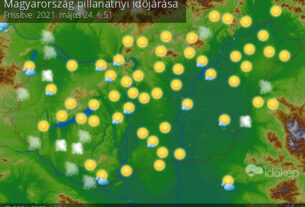Astronomical summer begins on Wednesday, the solstice will be at 4:57 p.m., the National Meteorological Service wrote on its website on Wednesday.
During the summer solstice, the Earth’s axis of rotation deviates from the Sun’s rays at the smallest angle, so on this day of the year, the day is the longest and the night is the shortest. Our planet is farthest from our star during this period, while it is closest during the winter months. The difference is roughly 5 million kilometers, they explained.
They reminded us that the summer solstice coincides with St. John’s day and night, but over the years, instead of June 24, the shortest night occurs on June 20 or 21. The reason for this is the spatial displacement of the Earth’s axis of rotation, as a result of which the time of the maximum solstice is shifted by 24 minutes every year.
(MTI)


















